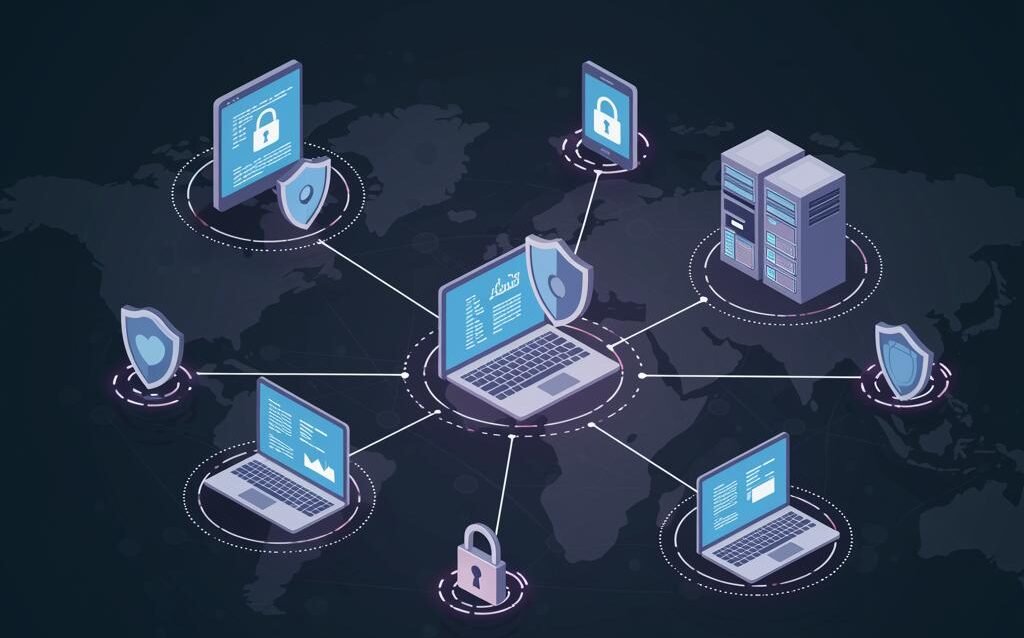Zero Trust for Small Business: Implementation Guide
Zero Trust Security Model: Implementation Guide for Small Businesses
The Zero Trust security model is gaining traction as a robust approach to protecting data and infrastructure in today’s complex threat landscape. Unlike traditional perimeter-based security, Zero Trust operates on the principle of “never trust, always verify.” This means that every user, device, and application attempting to access resources, whether inside or outside the network perimeter, must be authenticated and authorized before being granted access. This guide provides a practical roadmap for small businesses looking to implement a Zero Trust security model.
Understanding the Core Principles of Zero Trust
Before diving into implementation, it’s crucial to understand the fundamental principles that underpin Zero Trust:
- Assume Breach: Recognize that your network is already compromised or will be at some point. This mindset shifts the focus to limiting the blast radius of a potential attack.
- Verify Explicitly: Every user, device, and application must be authenticated and authorized before accessing any resource. This involves verifying identity, device security posture, and application integrity.
- Least Privilege Access: Grant users and applications only the minimum level of access necessary to perform their tasks. This reduces the potential damage from compromised accounts.
- Microsegmentation: Divide the network into smaller, isolated segments to limit the lateral movement of attackers.
- Continuous Monitoring and Validation: Continuously monitor user and device behavior, and validate security controls to detect and respond to threats in real-time.
Phase 1: Assessment and Planning
Implementing Zero Trust is a journey, not a destination. Start with a thorough assessment of your current security posture and develop a comprehensive plan.
Inventory Your Assets
Identify and document all your critical assets, including:
- Data (sensitive customer information, financial records, intellectual property)
- Applications (CRM, accounting software, email servers)
- Devices (laptops, desktops, mobile phones, servers)
- Users (employees, contractors, vendors)
Assess Your Current Security Posture
Evaluate your existing security controls and identify gaps in your defenses. Consider the following:
- Firewall rules and network segmentation
- Authentication and authorization mechanisms
- Endpoint security measures (antivirus, anti-malware)
- Data encryption practices
- Vulnerability management processes
Define Clear Goals and Objectives
Establish specific, measurable, achievable, relevant, and time-bound (SMART) goals for your Zero Trust implementation. For example:
- Reduce the risk of data breaches by 50% within one year.
- Implement multi-factor authentication for all users within six months.
- Segment the network into distinct zones based on data sensitivity within three months.
Phase 2: Implementing Key Zero Trust Controls
This phase focuses on deploying the essential technologies and processes to enforce Zero Trust principles.
Strengthen Identity and Access Management (IAM)
IAM is the cornerstone of Zero Trust. Implement the following:
- Multi-Factor Authentication (MFA): Enforce MFA for all users accessing sensitive resources. Consider using biometric authentication or one-time passwords.
- Privileged Access Management (PAM): Implement PAM to control and monitor access to privileged accounts. Use the principle of least privilege to grant only the necessary permissions.
- Identity Governance and Administration (IGA): Implement IGA to automate user provisioning, deprovisioning, and access reviews. This ensures that users have the appropriate access rights throughout their lifecycle.
Enhance Endpoint Security
Protect endpoints from malware, ransomware, and other threats:
- Endpoint Detection and Response (EDR): Deploy EDR solutions to detect and respond to advanced threats on endpoints.
- Application Control: Implement application control to restrict the execution of unauthorized applications.
- Device Posture Assessment: Assess the security posture of devices before granting access to resources. Verify that devices are patched, have up-to-date antivirus software, and comply with security policies.
Implement Microsegmentation
Divide the network into smaller, isolated segments to limit the lateral movement of attackers:
- Network Segmentation: Use firewalls, virtual LANs (VLANs), and software-defined networking (SDN) to segment the network based on data sensitivity and application criticality.
- Zero Trust Network Access (ZTNA): Implement ZTNA to provide secure remote access to applications and resources without exposing the entire network.
Phase 3: Continuous Monitoring and Improvement
Zero Trust is an ongoing process that requires continuous monitoring, validation, and improvement.
Implement Security Information and Event Management (SIEM)
Collect and analyze security logs from various sources to detect and respond to threats in real-time.
Conduct Regular Security Audits and Penetration Tests
Identify vulnerabilities and weaknesses in your security controls.
Continuously Improve Your Security Posture
Stay up-to-date with the latest threats and security best practices. Regularly review and update your Zero Trust policies and procedures.
Conclusion
Implementing a Zero Trust security model is a critical step for small businesses to protect themselves from evolving cyber threats. By embracing the principles of “never trust, always verify,” organizations can significantly reduce their risk of data breaches and other security incidents. While the implementation process can be challenging, the long-term benefits of increased security and reduced risk outweigh the effort. Start small, focus on the most critical assets, and continuously improve your security posture over time. Remember that Zero Trust is not a product you buy; it’s a security philosophy and a journey of continuous improvement.

